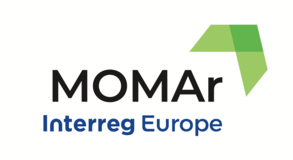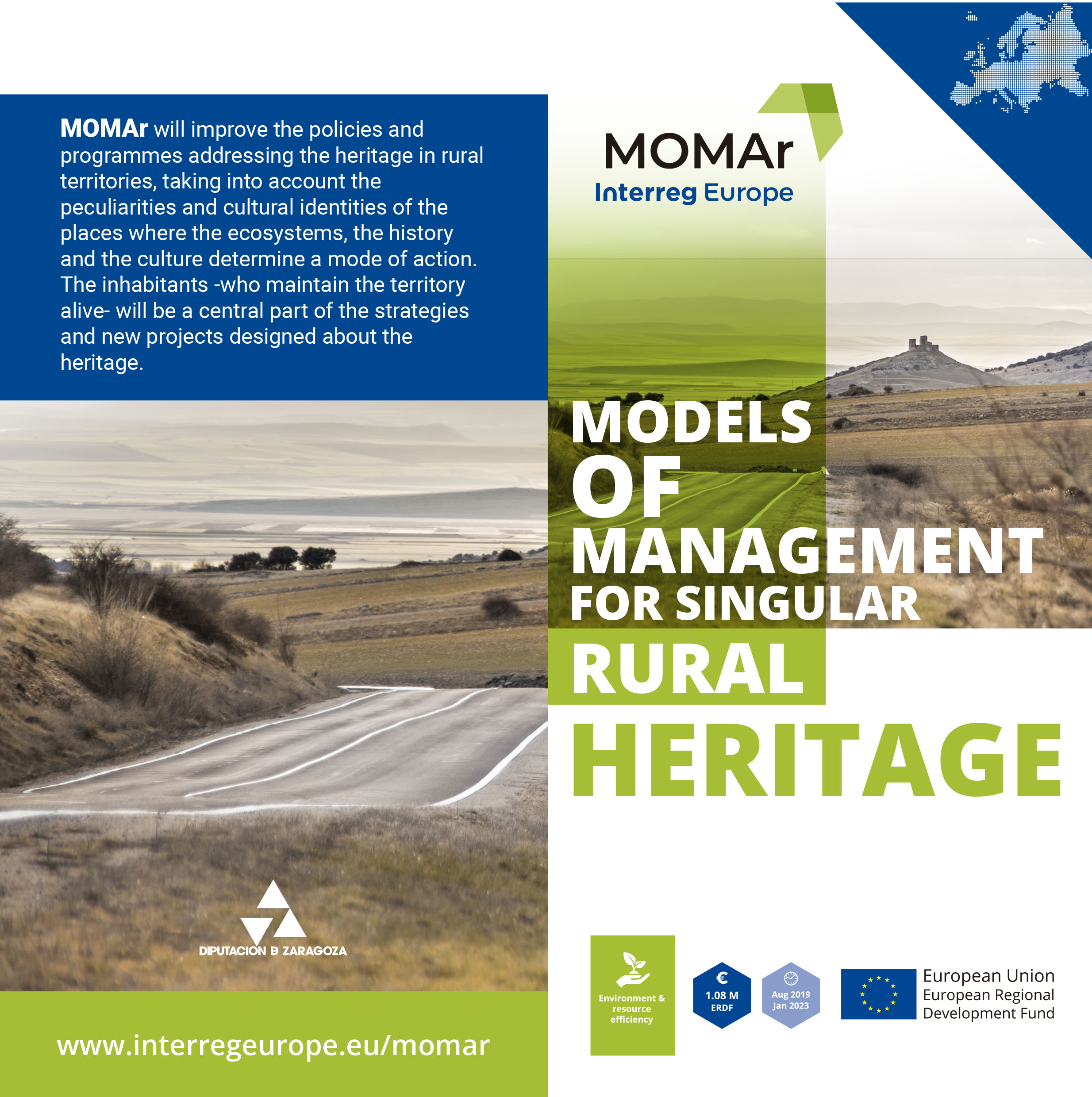The pedagogical purpose and the use of new technologies in the field of heritage management centred the third interregional meeting of MOMAr. On March 24 and 25, the event brought together more than 70 experts from nine European countries in order to share cases of success and failure in the management of heritage in rural areas. The online event was presented under the title: “From theory to practice. Experimental Models of Management Tested” and hosted by the Territorial Administrative Unit of Mehedinti County (Romania).

Digital and educational heritage
Silvia Iuliana Tranca, executive director at project management, sustainable, development and tourism department from Mehedinti County Council, together with Maria del Carmen Gracia, Chief of Culture Service at Provincial Government of Zaragoza welcomed the first session. As a host of the event, Tranca praised for the work of MOMAr and its tangible effects on the territories involved, proof of that, she announced that Mehedinti County Council is already working to implement one of the good practices learned from the first MOMAr’s Interregional event hold in Corsica last March 2020, it is a model of a conservation centre in a rural area.
Following, stakeholders took the floor and presented numerous cases of study, good and challenging practices in heritage management, focusing on digitalization and educational initiatives to transform heritage sites and recover them for the local people and external visitors. This is the case of Michaelstein Monastery in Saxony-Anhalt where it is possible to visit the enclosure and the exhibition rooms in a 3D virtual tour. In the same area, the Environment, Nature and Climate Protection Foundation of Saxony-Anhalt (SUNK) came up with an idea to increase the visibility of Blankenburg forest broadcasting digital spring walks live on Instagram during the coronavirus lockdown. The ongoing project in the Iron Gates Natural Park in Mehedinti County, a cross-border touristic project between Bulgaria and Romania, is also working to create 4 trails where all the cultural and natural heritage will be digitalized having, as a result, a virtual video walk presented on a web platform.
In the field of educational projects, South Bohemia presented two good practices. The first one was the wolf enclosure located in the small village of Srní. There, they created a space to reintroduce the wolf, native from the area but extinct in the XIX century, where families, hikers, nature lovers can enjoy the natural heritage while learning from this unique animal. The case of the Soběslav municipal library is an example of the rehabilitation of a historic building, a castle, into a public and social facility, open to the local population but an attraction for visitors as well. Province of Groningen, at its turn, presented the Keykeepers project from Groningen Historic Churches Foundation, where they achieved to bring new uses to medieval churches with the implication of schools and students. Besides, the restoration of the landscape through a project of reconstruction of the Hassensboch fortress from the 14th century by the Foundation of Landscape Management. As they said, “it is not just an archaeological work but a touristic promotional initiative”. Finally, the council of Monegrillo in Zaragoza Province explained their initiative to restore an old anti-raid shelter from the Spanish Civil War called "Cueva del Castillo”, to create a visiting space as well as a recovering memory project and a platform to disseminate a pacifist message.

The session concluded with the presentation of various challenging experiences from which the experts reflected and concluded about new necessary approaches. This is the case of an old sugar factory in Zaragoza, abandoned by the company, the people, and the administration, but from which it can be learned the necessity for public-private cooperation. Transromanica, Saxony-Anhalt stakeholder, presented a social media action that did not achieve the expected results but from it, the organization learned how to create a more effective and successful digital campaign. Finally, Province of Groningen explained their ambitious web project where people can access a detailed map and library of the cultural heritage in the region. As Janneke Verdjik, MOMAr’s project manager in Groningen declared, “our ambitions are very high, but we trust our tool”.
European cooperation
Interreg Europe aims to exchange knowledge between European territories with the last goal of having a positive impact on the national and regional policy instruments. With this desire to cooperate, MOMAr had the participation of three other European projects with common features to its lines of action: Interreg CRinMA, Interreg RegionArts, and the platform Cultural and Creative Regional Ecosystems (CCRE-S3).
To know more about the second session of the III Interregional Event click here












